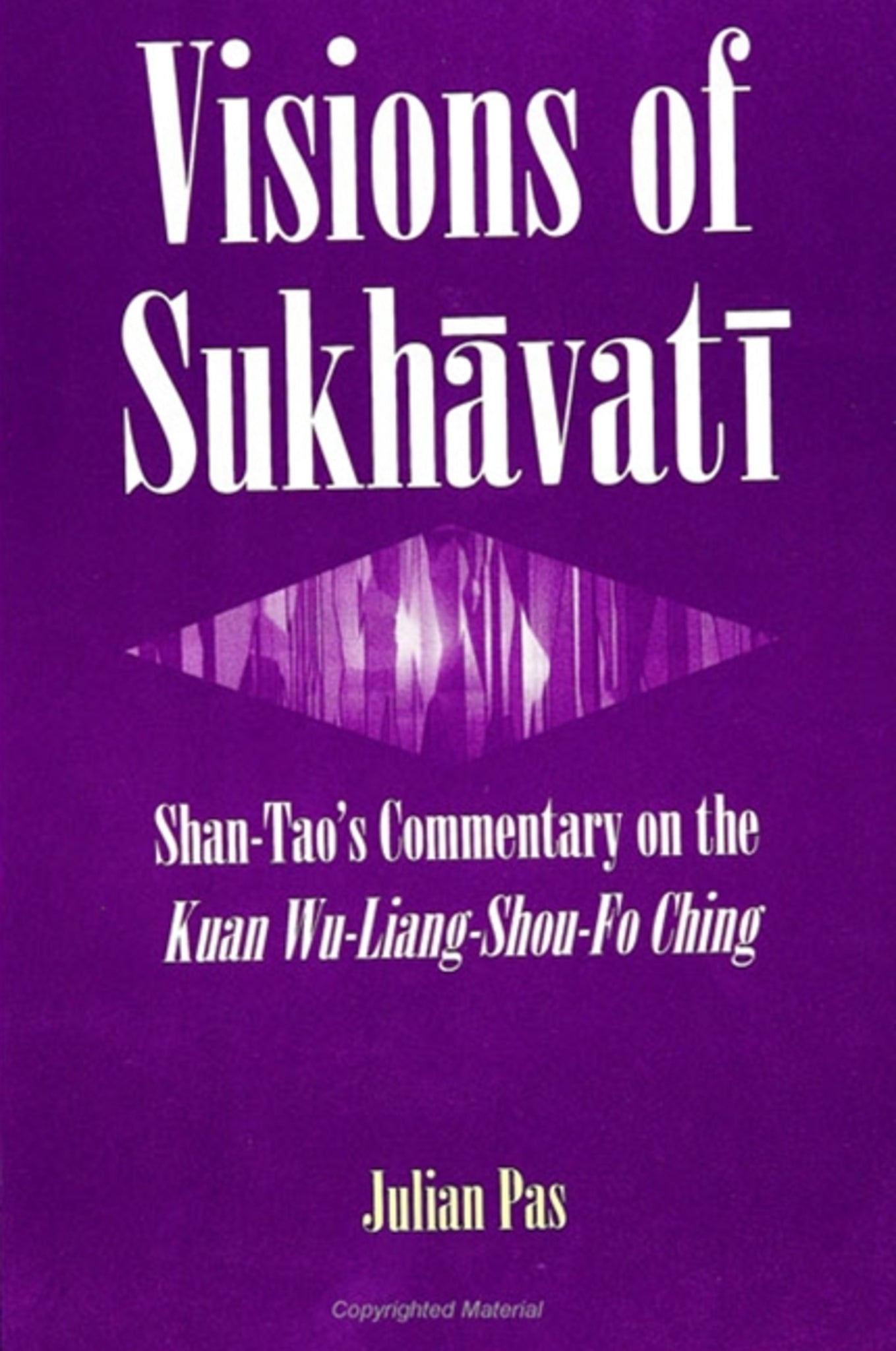We're sorry. An error has occurred
Please cancel or retry.
Visions of Sukhāvatī

Some error occured while loading the Quick View. Please close the Quick View and try reloading the page.
Couldn't load pickup availability
- Format:
-
17 August 1995

One of the masters of Pure Land Buddhism shows how to have a vision of the Land Sukhavati and its Lord by using the sutra as a manual of visualization.
The Pure Land movement focuses on the worship of one particular Buddha, Amitabha or Amitayus who created a paradise named Sukhavati, Land of Extreme Bliss. The scriptures of this school promise rebirth in that Land to the devotees of that Buddha. It was considered to be an "easy way" to gain salvation in contrast with the "arduous path" of self-sacrifice recommended in original Buddhism.
T'ang monk Shan-tao was instrumental in the propagation and popularity of this devotional school. He was an ascetic and serious meditator who followed the techniques of visualization explained in the Sutra on Visualizing Buddha Amita, and his commentary on this text was later considered to be his most outstanding work. Western authors, however, misrepresent Shan-tao because they follow the lead of Japanese Jodo Shinshu masters who deemphasized meditative practices. With the hope that old stereotypes will be dropped, this book lets the Chinese texts speak for themselves.


Preface
Acknowledgments
Part 1
1. The Emergence of Pure Land Buddhism
2. The Kuan wu-liang-shou-Fo ching and the Early Development of the Amita Cult
3. Biography of an Eminent Monk: Ch'an Master Shan-tao (613-681)
4. Shan-tao's Writings
Part 2
5. The Human Situation Versus Amita and His Land of Purity
6. The First Gate: Meditation
7. The Second Gate: Nonmeditative Action
8. Recitation of the Name of Amita
9. Rebirth in Sukhavati
Part 3
10. Shan-tao's Significance
Conclusion
Abbreviations
Notes
Glossary
Chinese Glossary
Select Bibliography
Index



